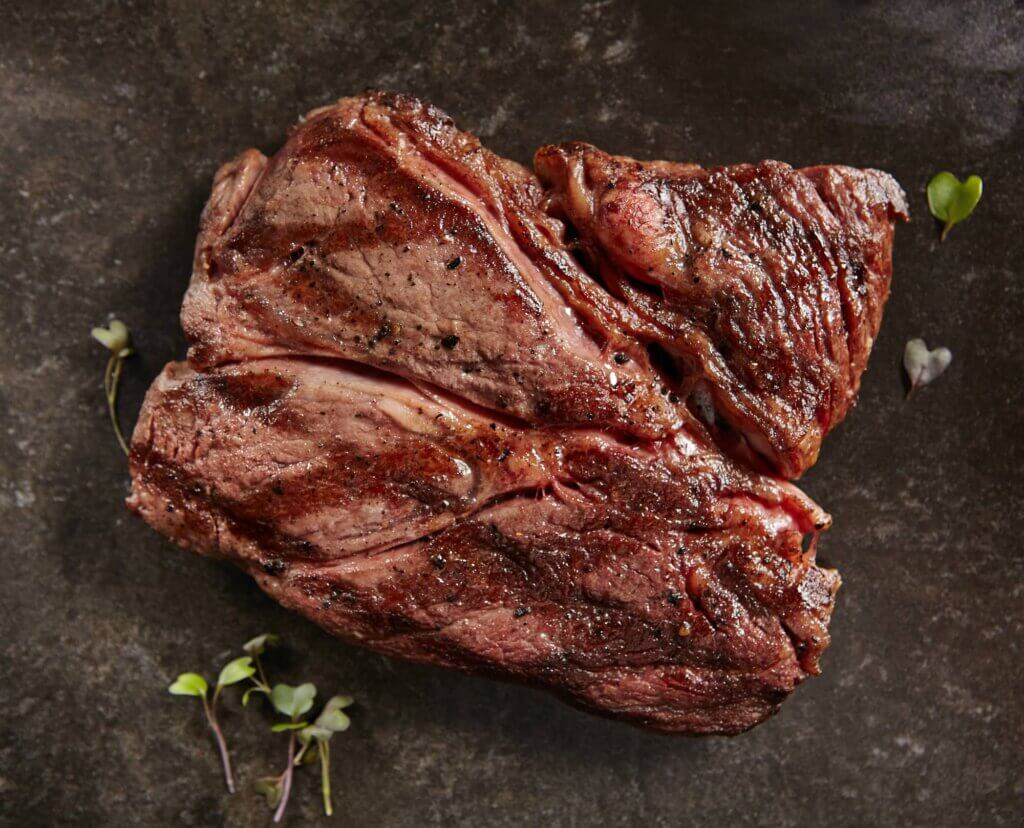
While beef has reigned supreme on the grill for decades, it’s far from the only option for hearty flavor. Bison steaks offer a nutritious and flavorful alternative that you can try with ease thanks to the expansion in farming.
The Bison ribeye steak in particular is a great way to introduce yourself to this type of meat. It’s especially popular among people sticking to a carnivore diet. If you’re ready to branch out into new forms of red meat, here’s the lowdown on how to get the best flavor and texture from this unique cut.
What is Bison Ribeye Steak?
Taken from the primal rib section of the bison, this steak is equivalent to the ribeye that comes from a cow. However, bison are a much larger animal and tend to get more exercise. This means that the ribeye from a bison is much leaner than the same beef steak. Still, it’s the best marbled and most tender cut you’ll commonly find sold. If you’re not familiar with them, bison are large hooved animals native to North America and Europe.
Preparing the Steak
The care you take in preparing the steak will play a big role in the appeal of the finished dish.
How to Season
Bison meat has a rich, hearty taste that many describe as being a supercharged beef flavor. It’s best to let that flavor shine and keep your seasonings simple. Most cooks serving this meat professionally stick to just salt and pepper for the ribeye steaks.
Variations
For those who love spices, Sichuan pepper swapped for the black pepper and the addition of some smoked paprika can go a long way. Consider liquid seasonings like Worcestershire sauce or soy sauce to boost the umami of the finished steak.
Tips to Cooking the Best Bison Ribeye Steak
- Let the steaks rest and come to room temperature before cooking them. If they’re frozen, give the steaks two full days in the refrigerator to ensure the meat is completely defrosted. Uneven cooking leaves the meat spongy or flavorless.
- Dry the steaks off with a paper towel before adding a little olive oil to help your seasonings stick. Bison steaks tend to be even wetter than beef steaks, so they’ll lose their seasonings while cooking unless you dry the surface first.
- Sear both sides of the steaks before cooking them regardless of the method. Without searing, the steaks are likely to turn out less flavorful and with less juiciness.
Cooking Methods:
You have three main cooking methods to choose from when dealing with Bison ribeye steaks. The oven and stove work great year round for a quick meal, but the grill really provides the best balance of flavor and texture for this type of meat.
On the Grill
With this method, you can sear the steaks in a pan before cooking or finish them at the end if you can turn the heat up on your grill. Depending on the thickness, it’ll take about 15 to 30 minutes to cook the steaks to medium well doneness. Don’t go beyond that point or the meat will toughen up.
In the Oven
Before cooking Bison ribeye steaks in the oven, sear them on the stovetop in a cast iron pan or Dutch oven. Once the steaks have an even browning effect on the surfaces, place them in a covered Dutch oven or casserole dish. Cover the steaks and cook for about 45 minutes, or until 130 degrees F to 145 degrees F internally.
On the Stove
For a quick Bison steak dinner, all you need is a cast iron pan. Start out over high heat to sear the meat, using a neutral high heat oil like avocado oil to prevent sticking. Cook for about 10 minutes per side, flipping two to three times during the total cooking process. Check the internal temperature and cover the meat to rest it for 5 minutes before serving.
Checking Doneness
Don’t rely on old fashioned methods like feeling the texture of your hand and comparing it to the meat. These methods aren’t that reliable even for beef and won’t work well for Bison.
Instead, use an instant read thermometer to check the internal temperature. Bison is safe to eat if it’s heated above 130 degrees F at least, which will leave it fairly rare. Stay under 145 degrees F at the most since the temperature will rise another 5 degrees after cooking.

Resting
Bison steaks definitely benefit from a rest to soften the meat and let the juices redistribute. Keep the steaks covered with aluminum foil or a glass lid so they don’t dry out.
Aim for a resting time between 5 and 10 minutes, then serve immediately. If you can’t enjoy the steaks immediately, you can heat them up in the oven in a covered dish with a little water in the bottom to keep everything moist.
Serving
Since Bison is a lean meat compared with beef, it’s a great type of steak to top with a flavored compound butter. Slicing the meat thinly makes it perfect for use in dishes like tacos or steak sandwiches as well. Don’t forget classic side dish pairings like mashed potatoes or roasted Brussel sprouts.
Conclusion
Explore the taste of genuine farmed Bison meat to discover your new favorite alternative to beef. With its rich flavor and generous marbling, the ribeye is the perfect steak to try if you’re new to this kind of meat.
It’s forgiving and can handle your usual stove top or grill cooking techniques. Put a flourish on your finished dish with a specialty topping like sauteed mushrooms or flavored herb butter.

